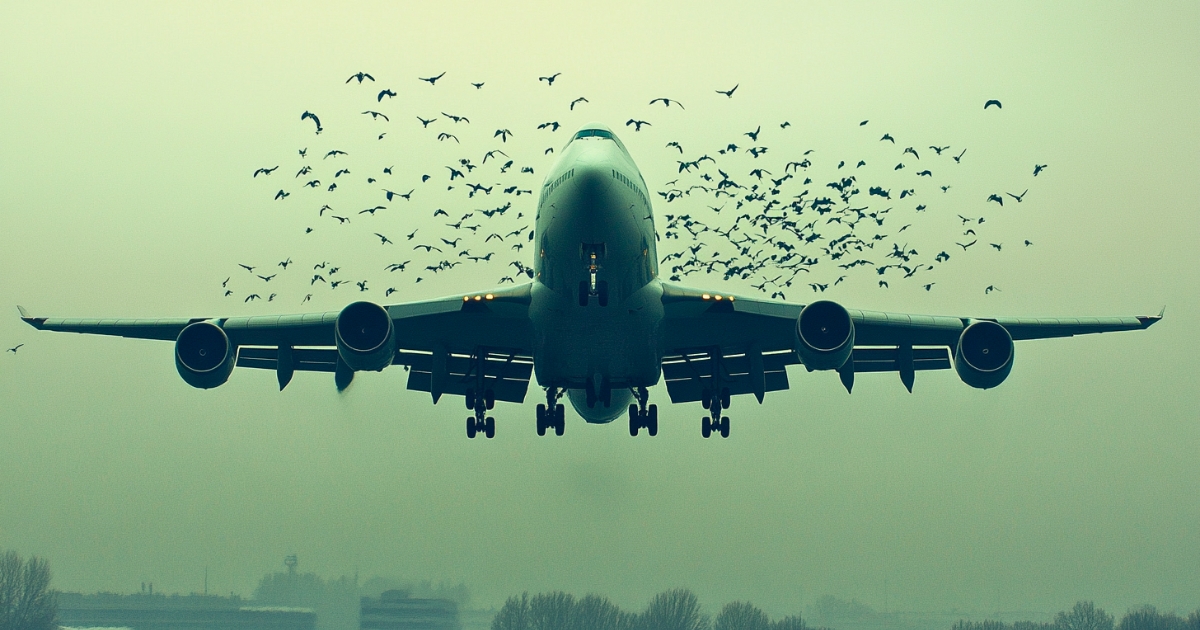Collisions between aircraft and birds during flight are not uncommon. This phenomenon, known as a “bird strike,” is a significant aviation safety concern. Recently, a Virgin Australia flight departing from Queenstown, New Zealand, was forced to make an emergency landing shortly after takeoff when its engine emitted loud noises and flames. The cause of this incident is likely attributed to a bird strike.
History and Frequency of Bird Strikes
The first recorded bird strike is believed to have occurred in 1905 when Orville Wright experienced one over a cornfield in Ohio. Since then, bird strikes have become a regular occurrence, with frequency increasing during bird migration seasons.
A famous incident occurred in 2009 when US Airways Flight 1549, shortly after taking off from LaGuardia Airport in New York, collided with a flock of Canada geese, causing both engines to fail. Captain Sully Sullenberger’s decision led to a dramatic water landing on the Hudson River.
Statistics reveal the high frequency of these incidents. According to the Australian Transport Safety Bureau, 16,626 bird strikes were reported between 2008 and 2017, averaging about 1,662 incidents per year. Even more astonishingly, the U.S. Federal Aviation Administration reported 17,200 bird strikes in 2022 alone.
Location and Impact of Bird Strikes
According to the International Civil Aviation Organization, 90% of bird strikes occur near airports, particularly during takeoff and landing or when aircraft are flying at lower altitudes where bird activity is high.
The impact of a bird strike varies depending on the type of aircraft and the circumstances of the collision. For large passenger aircraft, it may cause engine shutdown, but many are designed to fly safely with a single engine. However, for smaller aircraft, especially single-engine planes, bird strikes can be fatal. Since 1988, there have been reports of 262 fatalities and 250 aircraft destructions worldwide due to bird strikes.
Bird Strike Prevention Measures
Aircraft manufacturers, airlines, and airport authorities implement various measures to reduce the risk of bird strikes.
Pilots are trained to be especially vigilant during early morning and sunset hours when bird activity is high. Ground-based radar technology to track bird flocks has also been developed, although it’s not available worldwide.
Major aircraft manufacturers like Boeing and Airbus use turbofan engines. These engines undergo tests to enhance their resistance to bird strikes by firing bird carcasses or gelatin bird models at high speeds to ensure safety.
Airport-side measures are based on wildlife hazard management circulars, such as the one issued by the Australian Government’s Civil Aviation Safety Authority. This circular provides guidelines for managing hazards from all wildlife around airports, not just birds. Methods include using small gas explosions to mimic shotgun sounds to deter birds from runways and planting grasses and plants that don’t attract wildlife around airports.
Conclusion
Bird strikes remain a significant aviation safety challenge. As statistics show, their frequency is not low, with a particularly high risk near airports. The aviation industry is addressing this issue from various angles, including engine design improvements and airport environment management.
However, given the intersection of nature and human activity, it’s difficult to completely eliminate the risk of bird strikes. Therefore, continuous improvement of countermeasures and appropriate responses in case of incidents are crucial. Efforts will continue through multifaceted approaches, including pilot training and enhancing aircraft design safety.
Bird strikes occur at the intersection of human technology and nature, necessitating a continued search for solutions that balance aviation safety improvement and environmental protection.


